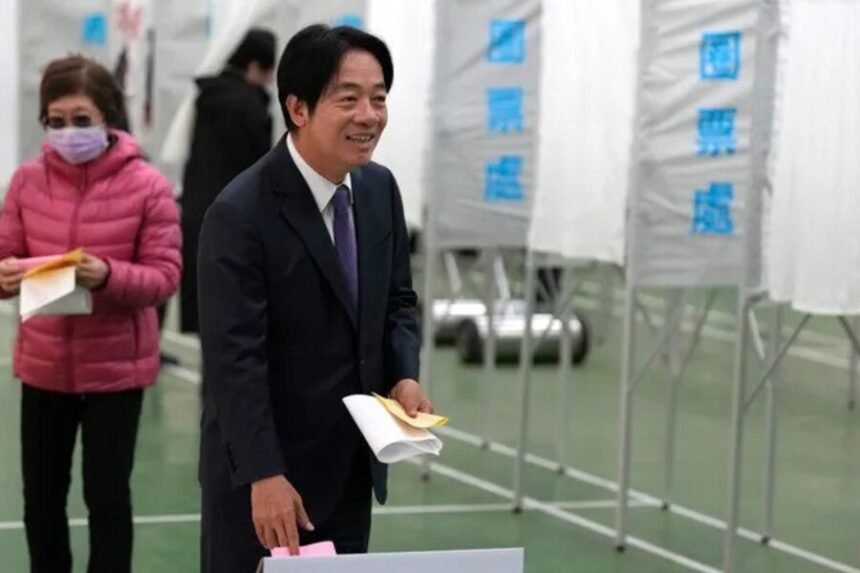As Taiwan prepares to inaugurate its newly elected President William Lai, tensions in the Taiwan Strait are escalating, with China intensifying its military and diplomatic pressure on the island.
This recent spike in aggression marks a significant uptick in the longstanding conflict between the two sides, raising concerns about regional stability and international security.
In the months leading up to the inauguration, China has been notably increasing its military maneuvers around Taiwan. These actions include the unprecedented boarding of a Taiwanese tourist boat by the Chinese coast guard, aggressive flights by military aircraft near Taiwan’s airspace, and increased harassment of Taiwanese fishing boats in the contested South China Sea waters.
Such activities are part of what analysts describe as Beijing’s strategy to establish a “new normal,” gradually escalating its intimidation tactics to undermine Taiwan’s sovereignty without triggering a direct conflict.
Strategic and Political Implications
Dean Karalekas, a recognized expert on civil-military relations in Taiwan, articulates that Beijing’s maneuvers are part of a grander scheme aimed at reshaping the geopolitical landscape.
According to Karalekas, Beijing employs “salami-slicing tactics,” a methodological approach to subtly alter the status quo by making incremental but consistent gains in territorial influence without triggering a significant backlash from the international community.
This strategy is akin to the tactics China has employed in the South China Sea, where it has successfully extended its territorial claims through gradual and calculated advancements, thereby establishing a more dominant presence.
The pattern of increased Chinese military activities typically escalates following high-profile engagements between Taiwan and Western nations. For instance, the visit by former U.S. House Speaker Nancy Pelosi in 2023 marked a significant uptick in tensions.
Beijing perceives such diplomatic interactions as direct challenges to its sovereignty claims over Taiwan, prompting a robust militaristic display. C. Donovan Smith, a geopolitical analyst, notes that the intricate planning and timing of China’s military drills reflect a strategic foresight rather than mere impulsive responses to specific events.
This suggests that China’s actions are part of a well-orchestrated plan designed to incrementally consolidate control over Taiwan while testing the boundaries of international responses to its aggressive maneuvers. Such strategies highlight Beijing’s long-term objectives to integrate Taiwan under its governance, using both political pressure and military intimidation to achieve its goals.
Domestic Dynamics and International Concerns
Amid these external pressures, Taiwan’s domestic politics reflect a strong commitment to maintaining the current policy stance against China. President-elect William Lai, succeeding Tsai Ing-wen, has vowed to continue her administration’s policies, which have been marked by a firm stance on Taiwanese sovereignty and cautious engagement with China.
However, Beijing regards Lai, who has previously expressed support for Taiwanese independence, as a separatist threat, which could lead to further escalations.
Strategically, Taiwan remains a significant concern for China. The construction of a massive new airport in Xiamen, located just across the narrow strait from Taiwan’s Kinmen Island, exemplifies the strategic maneuvers aimed at reinforcing Beijing’s position in the region.
The recent unilateral changes to airspace regulations by China, particularly around the Kinmen area, further demonstrate Beijing’s intent to assert control over the air routes that are critical for Taiwan’s connectivity and security.
Experts like Karalekas believe that China tests new leaders by creating crises to gauge their responses. “It’s a pattern seen across different administrations in China, testing leaders from enemy states to assess their resilience and reaction under pressure,” he stated. The upcoming inauguration of Lai is thus seen as a potential flashpoint for new provocations by Beijing.
On the ground in Taiwan, the public sentiment is mixed. While many support the current government’s tough stance against Beijing, others, like Kaohsiung resident Eric Hsu, express concerns about the broader implications of escalating tensions.
“It’s not just about military might; it’s also about the ideological battle, the influence campaigns, and internal divisions within Taiwan that could be exploited by Beijing,” Hsu commented.
In the political arena, the main opposition party, the Kuomintang (KMT), promotes a more conciliatory approach towards China, advocating for dialogue and mutual recognition of a “one China” policy, albeit with different interpretations.
This stance, however, is contentious within Taiwan, where many fear it could lead to concessions that undermine Taiwanese sovereignty.
The geopolitical dynamics of the Taiwan Strait are complex and fraught with historical tensions. As China continues to flex its military muscle and diplomatic pressure, the international community watches closely, aware that the actions in this small but significant region could have far-reaching implications for global peace and stability.
As Taiwan steps into a new era under President William Lai, the island remains a pivotal point in the power play between major global forces, with its people determined to safeguard their democratic way of life against increasing external pressures.
The coming months will be critical in shaping the future trajectory of Taiwan-China relations, with potential consequences for the entire Asia-Pacific region and beyond.




